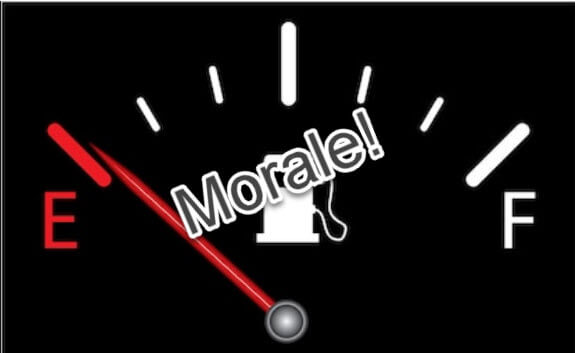https://hollandspiele.com/blogs/hollandazed-thoughts-ideas-and-miscellany/failing-my-morale-check?comment=80384786537#comments
Great post. So on point.
Tom is a master of brevity, accuracy and succinct rule writing.
He and Dean Essig are quiet possibly write the best rulebooks today.
As I commented on Tom’s blog, it would be nice for the designers from the 70’s & 80’s to read this and let go of the past way of doing things and adapt to a post snail mail style of wording.
Mark Herman is a great example of evolving rule writing styles that is so much better today than it ever was.

Just go compare The Pacific War rulebook to Empire of the Sun or Waterloo 1815. Night and day writing styles. Once is redundant, repetitive and laborious. The other is clear succinct and crystal clear.


One thing I insist upon for rules is use of the Case system for organization. So many games with a breezy, conversational rule writing style just flat out drop the ball. You can’t find anything when you need it, because it’s buried in a sea of text.
I will concede, however, that at times, use of the Case system, and the 1.3b rejoinder, can in very complex systems, result in rules pertinent to multiple situations being really hard to find when the players need to reference them. In an admirable attempt to keep the rules as short as possible, you can only find specific situational rules in one spot… and if you come at it from another angle or point of view, you can’t find it in other areas. Example: in Great Battles of the American Civil War, there is a rule that states that, if an artillery battery is firing over the heads of friendly units adjacent to, and lower than the target hex, there is a chance that there might be a friendly fire incident (and subsequent cohesion check) if the die roll is sufficiently low when resolving the shot. This special case is relevant to: Line of Sight… Artillery Bombardment (as opposed to canister fire!), Effects of Friendly Units on Combat, and a few others that escape my mind at the time. I *know* that rule is there, but a few times I’ve gone looking for it, I was just unable to find it; and that was because there was but ONE mention of it.
Hey Kev, some great points made here, but I notice your Comment on Tom’s blogpost is redundundantly repeated twice. Is that some kind of brilliantly playful meta-gag or is it simply for emphasis? Asking for a friend.